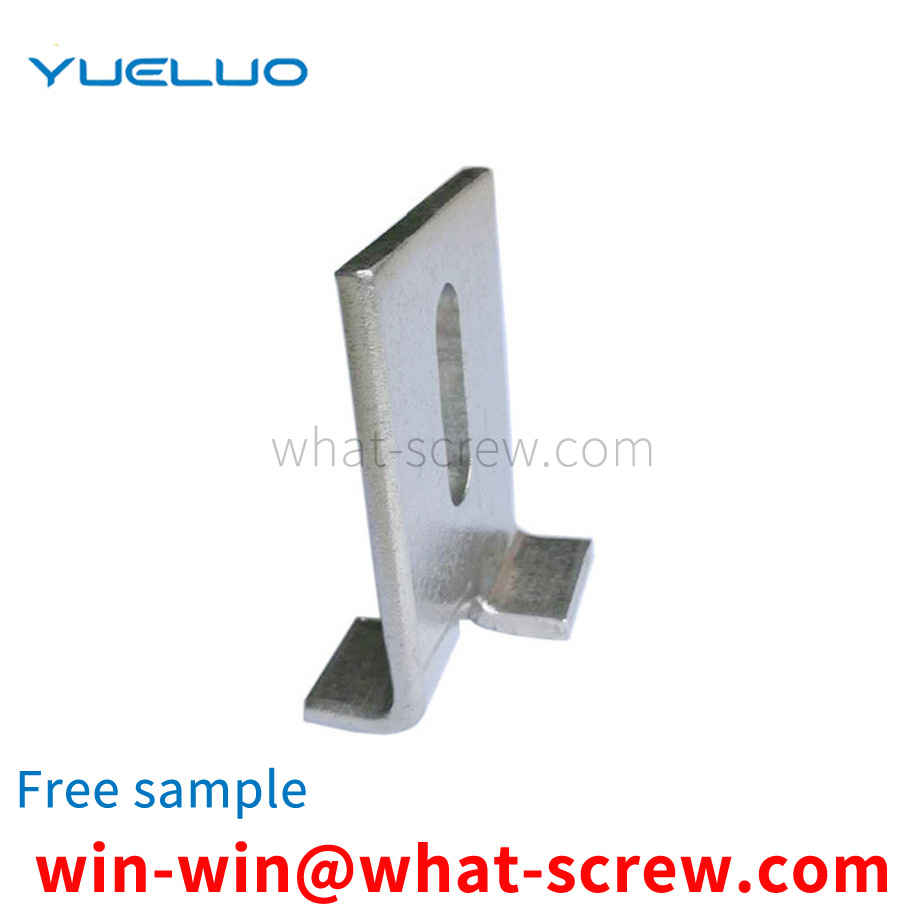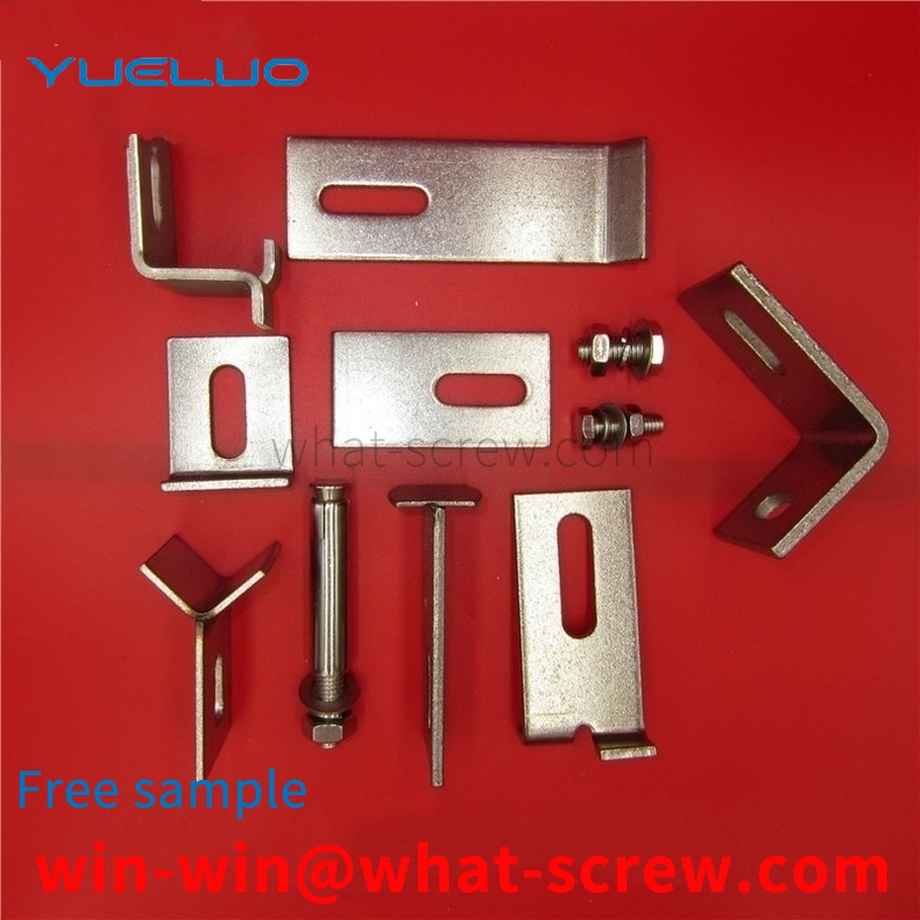The quality of electroplating is measured primarily by its corrosion resistance, followed by appearance. Corrosion resistance is to imitate the working environment of the product, set it as the test condition, and perform a corrosion test on it. The quality of electroplating products shall be controlled from the following aspects: 1. Appearance: Partial uncoated, scorched, rough, gray, peeling, crusted, and obvious stripes are not allowed on the surface of the product, and pinholes, pitting, and black plating are not allowed. Slag, loose passivation film, cracks, peeling off and serious passivation marks. 2. Coating thickness: The operating life of fasteners in corrosive atmosphere is proportional to its coating thickness. The general recommended thickness of economical electroplating coating is 0.00015in ~ 0.0005in (4 ~ 12um). Hot-dip galvanizing: the standard average thickness is 54 um (43 um for diameter ≤ 3/8), and the minimum thickness is 43 um (37 um for diameter ≤ 3/8). 3. Coating distribution: With different deposition methods, the aggregation method of the coating on the surface of the fastener is also different. During electroplating, the coating metal is not uniformly deposited on the peripheral edge, and a thicker coating is obtained at the corners. In the threaded portion of the fastener, the thickest coating is located on the thread crest, gradually thinning along the flank of the thread, and the thinnest deposit is at the bottom of the thread, while hot dip galvanizing is just the opposite, the thicker coating is deposited on the inside corners and On the bottom of the thread, mechanical plating tends to deposit the same metal as hot-dip plating, but is smoother and has a much more uniform thickness over the entire surface [3]. 4. Hydrogen embrittlement: During the processing and processing of fasteners, especially in the pickling and alkali washing before plating and the subsequent electroplating process, the surface absorbs hydrogen atoms, and the deposited metal coating then traps hydrogen. When the fastener is tightened, the hydrogen is transferred towards the most stressed parts, causing the pressure to build up beyond the strength of the base metal and producing microscopic surface cracks. Hydrogen is particularly active and quickly seeps into the newly formed fissures. This pressure-rupture-penetration cycle continues until the fastener breaks. Usually occurs within a few hours after the first stress application. To eliminate the threat of hydrogen embrittlement, fasteners are heated and baked as soon as possible after plating to allow hydrogen to seep out of the plating, typically at 375-4000F (176-190C) for 3-24 hours. Since mechanical galvanizing is non-electrolyte, this virtually eliminates the threat of hydrogen embrittlement, which exists in galvanizing using electrochemical methods. In addition, due to engineering standards, it is forbidden to hot-dip galvanize fasteners with hardness higher than HRC35 (Imperial Gr8, metric 10.9 and above). Therefore, hydrogen embrittlement rarely occurs in hot-dip plated fasteners. 5. Adhesion: Cut or pry off with a solid tip and considerable pressure. If, in front of the blade tip, the coating peels off in flakes or skins, exposing the base metal, the adhesion shall be considered insufficient.
304L stainless steel cold pier line, 304 stainless steel cold pier line, 310 stainless steel cold pier line, 303 stainless steel cold pier line, 302 stainless steel cold pier line, 301 stainless steel cold pier line, 202 stainless steel cold pier line, 201 stainless steel cold pier line, 410 stainless steel Cold pier line, 420 stainless steel cold pier line, 430 stainless steel cold pier line, 316L stainless steel cold pier line: 316 stainless steel contains molybdenum and low carbon content, and its resistance to pitting corrosion in marine and chemical industry environments is much better than 304 Stainless steel! (316L low carbon, 316N nitrogen high strength and high strength, 316F stainless steel with high sulfur content, easy to cut stainless steel [1]. 304L stainless steel cold pier wire: as a low carbon 304 steel, in general, the corrosion resistance is the same as 304. Similar, but after welding or after stress relief, its resistance to grain boundary corrosion is excellent, and it can maintain good corrosion resistance without heat treatment. 304 stainless steel cold pier wire: has good corrosion resistance, heat resistance High temperature resistance, low temperature strength and mechanical properties, good thermal processability such as stamping and bending, no heat treatment hardening phenomenon. Uses: tableware, cabinets, boilers, auto parts, medical appliances, building materials, food industry (use temperature -196°C-700° C) 310 stainless steel cold pier wire: The main features are: high temperature resistance, generally used in boilers, automobile exhaust pipes. Other properties are average. 303 stainless steel cold pier wire: By adding a small amount of sulfur and phosphorus, it is easier to cut than 304, Other properties are similar to 304. 302 stainless steel cold pier wire: 302 stainless steel bar is widely used in auto parts, aviation, aerospace hardware tools, chemical industry. The details are as follows: handicrafts, bearings, slippery, medical equipment, electrical appliances, etc. Features: 302 stainless steel The ball is austenitic steel, which is close to 304, but the hardness of 302 is higher, HRC≤28, and has good rust and corrosion resistance. 301 stainless steel cold pier wire: good ductility, used for forming products. Machining makes it harden quickly. Good weldability. Wear resistance and fatigue strength are better than 304 stainless steel. 202 stainless steel cold pier wire: belongs to chromium-nickel-manganese austenitic stainless steel, and its performance is better than 201 stainless steel cold pier wire Shenzhen Global Stainless Steel Cold Pier Wire 201 Stainless Steel Cold Pier Wire: It belongs to chromium-nickel-manganese austenitic stainless steel, with low magnetic properties. 410 stainless steel cold pier wire: belongs to martensitic (high-strength chromium steel), with good wear resistance and corrosion resistance Poor performance. 420 stainless steel cold pier wire: cutting tool grade martensitic steel, similar to Brinell high chromium steel, the earliest stainless steel. It is also used for surgical knives and can be made very bright. 430 stainless steel cold pier wire: Ferritic stainless steel, decorative, e.g. for car accessories. Good formability, but poor temperature and corrosion resistance
In view of the deficiencies in the prior art, the purpose of Guangdong Yueluo Hardware Industry Co., Ltd. is to provide a detachable rivet to solve the problems raised in the above-mentioned background technology. Guangdong Yueluo Hardware Industry Co., Ltd. is easy to use, easy to operate, and has good stability. , high reliability.
Yueluo relates to a self-tapping screw according to the preamble of claim 1. A self-tapping screw is known from EP0623759B1, the ratio of the outer diameter to the smaller diameter of the self-tapping screw is about 1.25-1.5, the ratio of the outer diameter to the pitch lead is about 1.5-1.6 and the thread The flank angles of , are < 50° and ≥ 35°. EP0433484B1 proposes a self-tapping screw whose thread is provided with cutting teeth of approximately arcuate design, and the cutting edge and the thread crest are at the same horizontal position and are set in opposite directions. One purpose of Yueluo is to realize a general type of self-tapping screw so that it can be screwed particularly easily into holes drilled in concrete or other materials such as bricks and the like. According to Yueluo, this object is achieved by the features in the characterizing part of claim 1, and surprisingly, it has been found that the parallel arrangement of the flanks, ie with a flank angle of about 0°, will make screwing particularly easy when screwing in , especially if the diameter of the hole varies within an allowable tolerance. One reason may be due to the fact that there is no lateral pressure on the material screwed into the thread, even if threads of different depths are cut in concrete or other materials such as brick, chipped plywood, or hardwood. The thread cuts into the material over its entire width by cutting grooves. In particular according to the embodiment of claim 4 the material cut out when screwing in the screw can be discharged without any accumulation, the dependent claims reflecting many advantages of further embodiments.
The core rivet is another type of single-sided riveting. When riveting, the head of the rivet is hit with a hammer to expose the core, so that it is flush with the end face of the nail head, that is, the riveting operation is completed, which is very convenient, especially suitable for inconvenient Riveting occasions using ordinary rivets (which must be riveted from both sides) or blind rivets (lack of a rivet gun). Usually use flat head rivets, countersunk head rivets are suitable for occasions where smooth riveting is required on the surface.
We have many years of experience in the production and sales of screws, nuts, flat washers, etc. The main products are: double lug washers, 304 fine-tooth bolts, left-toothed left-handed reverse nuts, cross plastic screws and other products, we can provide you with suitable products for you. Fastener Solutions.



















 Service Hotline
Service Hotline




